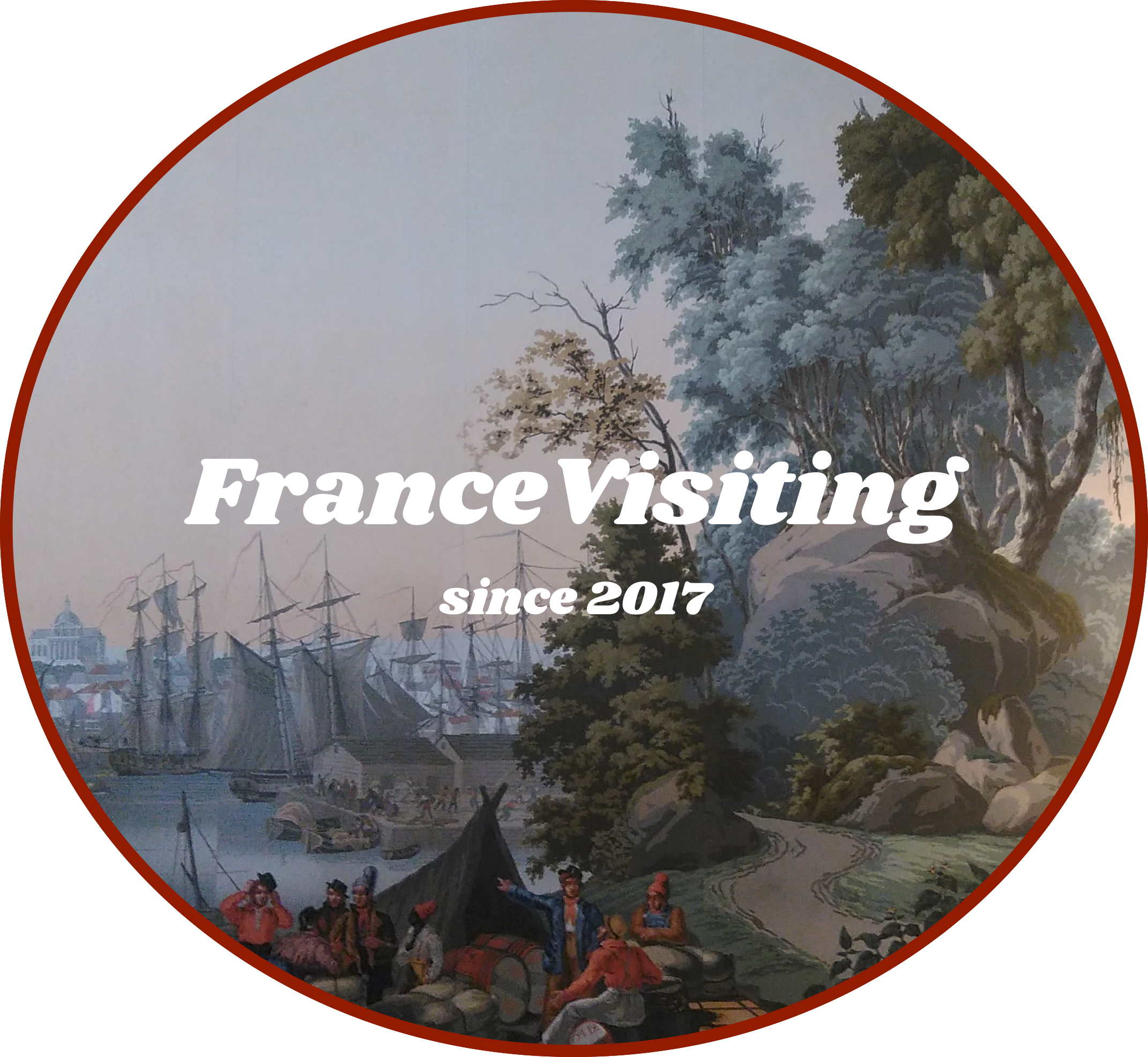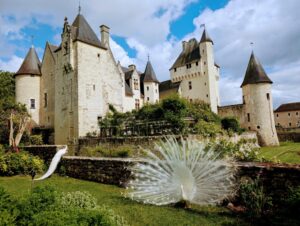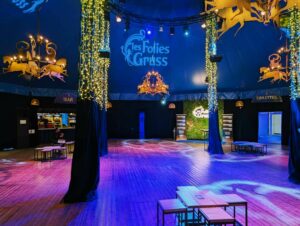2KM3, Act 2: Saint-Gervais-Mont-Blanc really loves Contemporary Art!
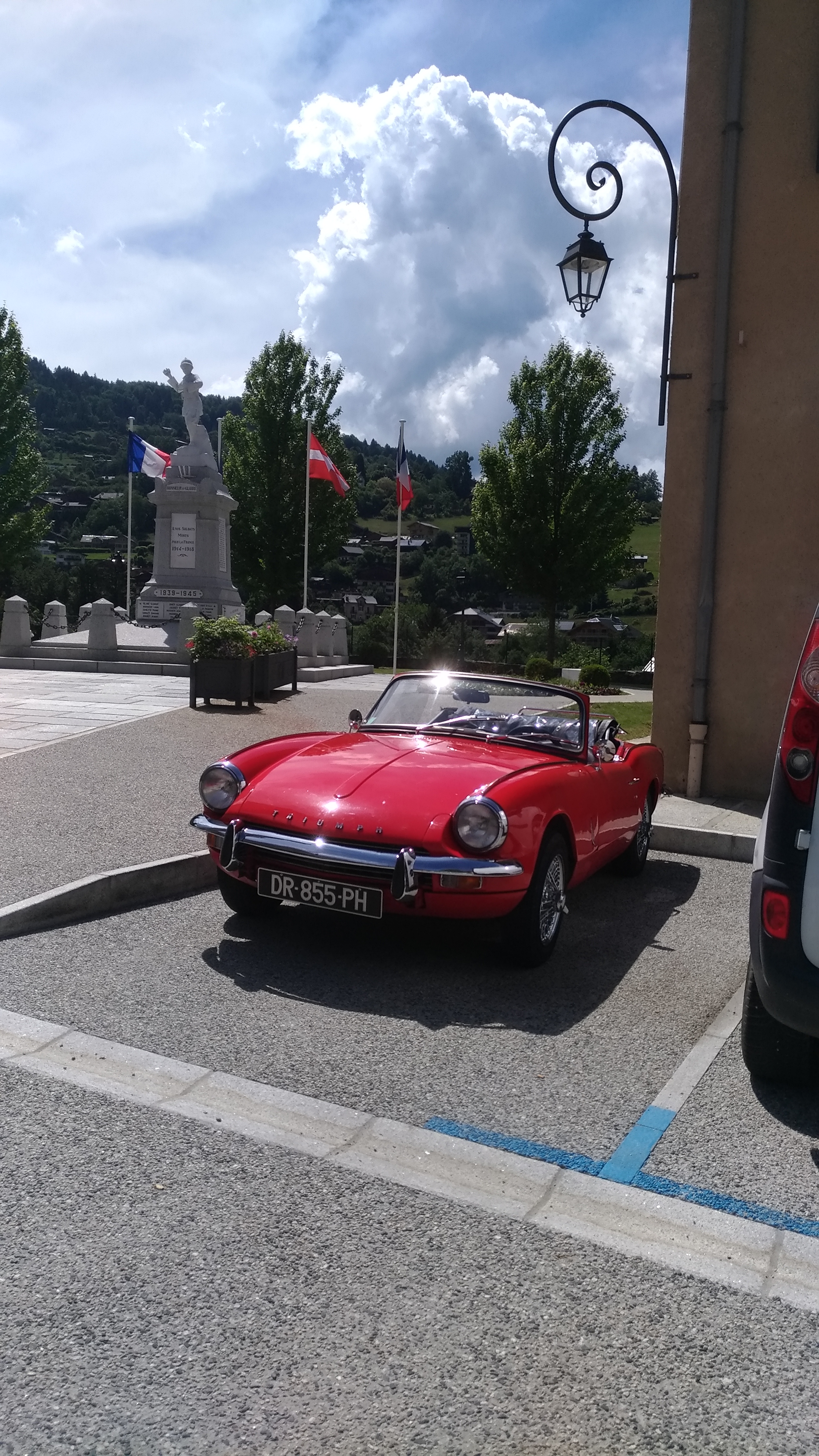
The French Alps Resort of Saint-Gervais is pleased to welcome a second Act of the 2KM3 street art project. The first edition inaugurated in June 2017 brought together 11 artists with the intention of inserting art in the city and in life. Wishing to increase these links and to propose a real course in the commune, 2KM3 Act II will bring together a collective of 10 artists, local artisans and all of the community so that contemporary creation will be more than ever closer to the citizens (photo credits: Alexandre Plateaux).
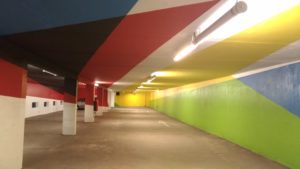
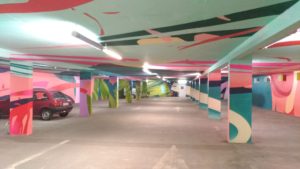
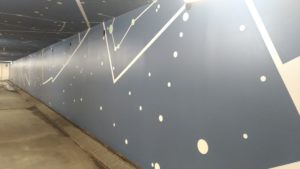
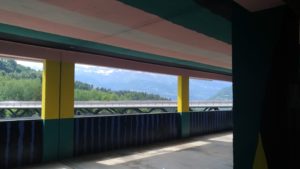
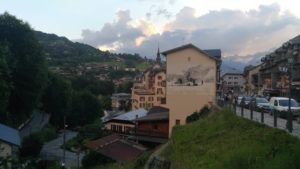 In 2017, the 2KM3 contemporary art project, initiated by the Saint-Gervais Mayor, Jean-Marc Peillex, with the support curators of the event Hugues Chevallier and Frédéric Battle (ZOER), had brought together 11 artists for create an artistic platform alternative: create works within the downtown car park, either invest 12,000 m2 of surface. Elian Chali, Etienne de Fleurieu, Jaw, Felipe Pantone, Roids, SatOne, Sten & Lex, Sobekcis, Swiz, Velvet and Zoer have thus transformed this space fits in the heart of the public space (photo credits: Alexandre Plateaux).
In 2017, the 2KM3 contemporary art project, initiated by the Saint-Gervais Mayor, Jean-Marc Peillex, with the support curators of the event Hugues Chevallier and Frédéric Battle (ZOER), had brought together 11 artists for create an artistic platform alternative: create works within the downtown car park, either invest 12,000 m2 of surface. Elian Chali, Etienne de Fleurieu, Jaw, Felipe Pantone, Roids, SatOne, Sten & Lex, Sobekcis, Swiz, Velvet and Zoer have thus transformed this space fits in the heart of the public space (photo credits: Alexandre Plateaux).
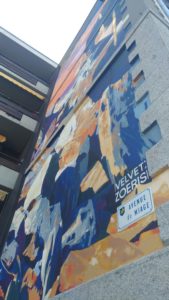 For this second edition of 2KM3, the works took place again where we do not do not wait: on the wall of the Post Office (by Zoer, left photo), within the Saint-Gervais Swimming Pool and Bettex gondola stations and Mont d’Arbois. Art interferes in the daily life and weld so the urban fabric through a real artistic path. The creation is sort of its usual territory the test the artists.
For this second edition of 2KM3, the works took place again where we do not do not wait: on the wall of the Post Office (by Zoer, left photo), within the Saint-Gervais Swimming Pool and Bettex gondola stations and Mont d’Arbois. Art interferes in the daily life and weld so the urban fabric through a real artistic path. The creation is sort of its usual territory the test the artists.
The desire to establish a social bond and local is at the heart of Act II of 2KM3. The artists will work in close collaboration with regional artisans to respond to problems imposed by these places. To ensure the sustainability of works within these environments varied, several companies will be contributions including Grosset-Janin, Quechua, Ligeon, Jefco. This proximity between artists and artisans reveals a willingness to approach the artistic production otherwise in relying on exchanges between know-how and creation.
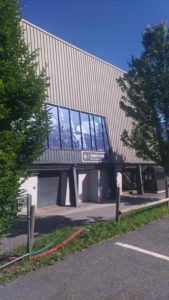
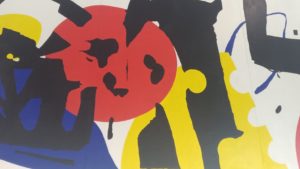 The acrylic triptych, “Postcard of Abstract Landscapes” by Irsut is presented in the gondola lifts station, in the representation evoking the mountainous landscapes, according to the artist.
The acrylic triptych, “Postcard of Abstract Landscapes” by Irsut is presented in the gondola lifts station, in the representation evoking the mountainous landscapes, according to the artist.
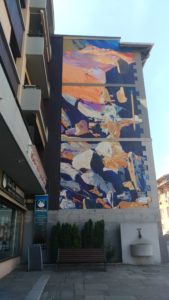
The visit continues with a joint work on the Post wall always carried out by a tandem of artists Street Art, working very often with four hands, Velvet and Zoer, following the preparatory work of 40 models.
Once again, this monumental mural, “Pierre, imprint and nail”, in tuxturally adapted acrylic on the walls, whose artist does not know the dimensions, evokes the mountainous landscape so dear to the Mont Blanc massif and more specifically the work the size of the stone.
A work of mural painting which tends to be generalized since the municipalities find there an alternative means of valorization of the urban landscape. As for property developers, this is a way to have tax rebates by buying a work.
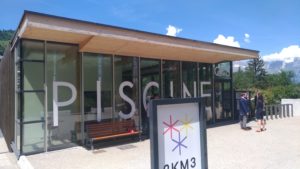
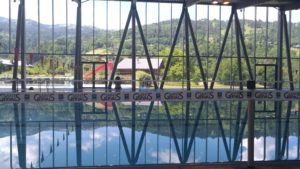
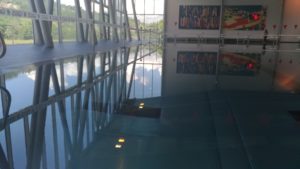
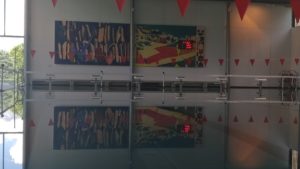
Next step in the municipal pool, here with the challenge of using a paint sufficiently resistant to corrosion basins. Thus materials made available by the company Grosset Janin, resistant to wind and rain, including stainless steel supports instead of wood.
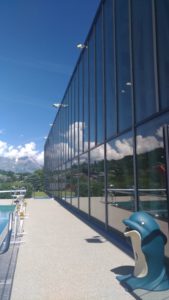

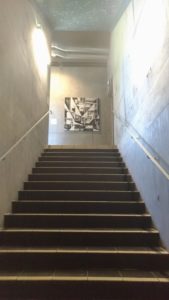
A succession of achievements of different styles, mark out the journey of the visitor to the basin of this modernist swimming-pool made of steel, concrete and glasses by the “Bauhaus-stylish” architect Dietmar Feichtinger. Places that are conducive to recreation are often dissociated from places where culture
is exposed. By associating these two entities, we think of the institution of Roubaix
or the work of Leando Erlich.
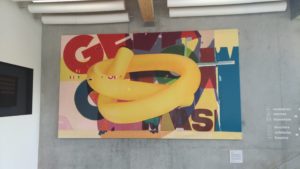
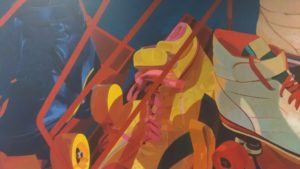
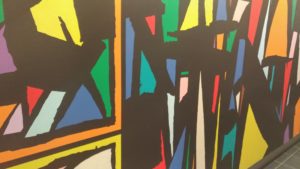
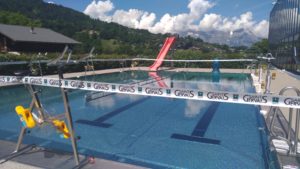
A constellation, stencilled by Etienne de Fleurieu, is fixed to the ceiling, referring to the clarity of the sky in the alpine latitudes.
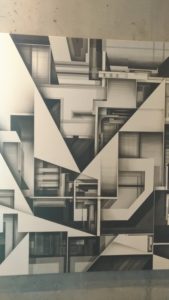
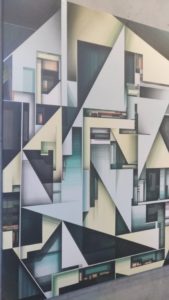
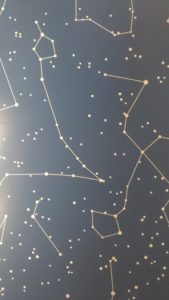
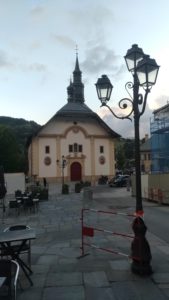
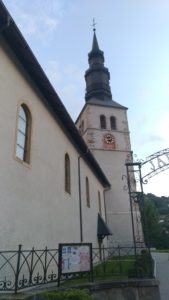

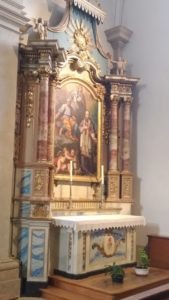
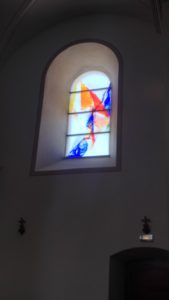
2KM3 isn’t the only attraction of Saint-Gervais-Mont-Blanc!
Also, the Church of Saint-Gervais, dedicated to Saint-Gervais of course and Saint-Protais, the newly restored church mixes Ancient Art, with its alpine Baroque Art and contemporary Art, with its 8 stained glass windows created in 2016 by the Korean artist Kim En Joong, specially for the restoration of the building.
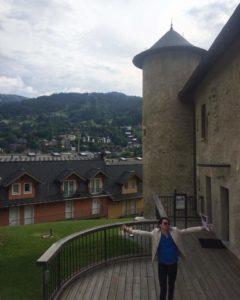
In the heart of the city, the Maison Forte De Hautetour welcomes, in a former 13th century fortified edifice completely renovated, the cross-border house of the guides of Saint-Gervais-Courmayeur. After an ambitious restoration in 2012, this Museum is nowadays a dynamic cultural center, decorated with traditional alpine wood on walls and roof. To make you feel like in a moutain lodge!
Immerse yourself in the life of the first conquerors of the Mont-Blanc who began their ascent from Saint-Gervais by the “Voie Royale”, the most accessible route, starting from the “Nid d’Aigle”.
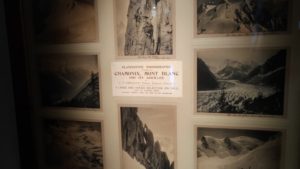

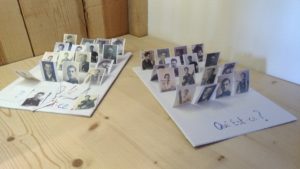
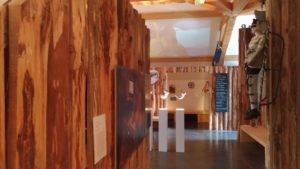
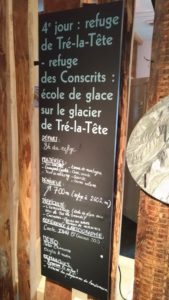
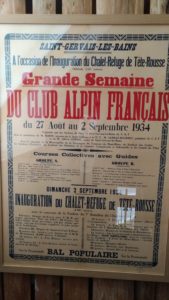
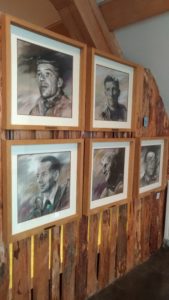 The interactive scenography, punctuated by multimedia supports, allows to discover the history of the Company of the guides, the ascent of Mont Blanc.
The interactive scenography, punctuated by multimedia supports, allows to discover the history of the Company of the guides, the ascent of Mont Blanc.
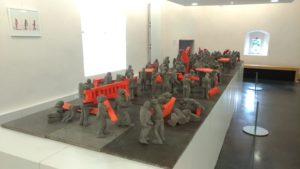
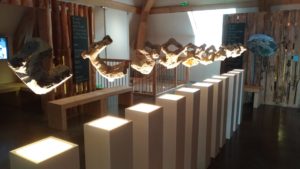
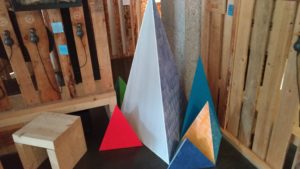
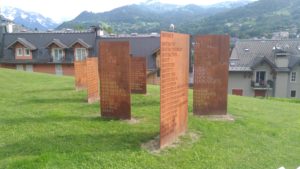
Artist residencies & temporary exhibitions present contemporary creation, like the varnished granite crowds of the French artist Denis Monfleur or the wooden mountain peaks of Elodie Boutry; and outside, the copper plates of Xavier Brandeis.
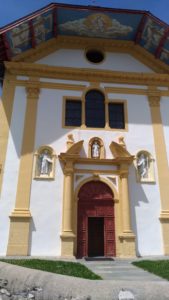
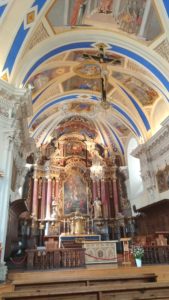


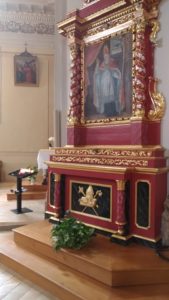
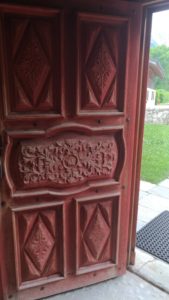 A couple of km, further in the valley, is located another baroque Church of Saint Nicholas de Véroce, built during the 1st half of the 17th century thanks to the financial contributions of peddlers & expatriates who had left for the Germanic lowlands. Discover the majestic altarpiece and Baroque decoration, as well as the famous “Saint-Nicolas blue” adorning the vaults painted in the 19th century. We find in this typical Baroque church, tufa and curves, against several “trompe l’oeil”. The place hosts each first week of August (August 6 to 11), a festival of classical music. Free guided tours on Fridays at 3 pm.
A couple of km, further in the valley, is located another baroque Church of Saint Nicholas de Véroce, built during the 1st half of the 17th century thanks to the financial contributions of peddlers & expatriates who had left for the Germanic lowlands. Discover the majestic altarpiece and Baroque decoration, as well as the famous “Saint-Nicolas blue” adorning the vaults painted in the 19th century. We find in this typical Baroque church, tufa and curves, against several “trompe l’oeil”. The place hosts each first week of August (August 6 to 11), a festival of classical music. Free guided tours on Fridays at 3 pm.
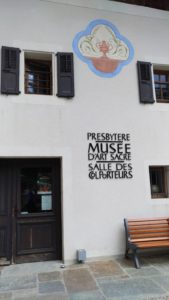
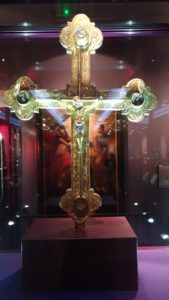
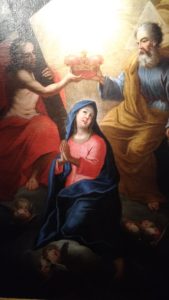 In front of it, the museum of Sacred Art, located in the former presbytery, presents, in a modern scenography, the Treasury of Saint-Nicolas, but also the history of the village and its peddlers.
In front of it, the museum of Sacred Art, located in the former presbytery, presents, in a modern scenography, the Treasury of Saint-Nicolas, but also the history of the village and its peddlers.
The treasury of Saint-Nicolas de Véroce is made up of wood carvings, paintings and goldsmith’s pieces, ranging from the 16th to the 19th century, offered largely by hawkers or expatriates, who became wealthy merchants in Germany. It also teaches the emergence of Savoyard migrants to commercial homes in “Alemanic countries”, such as Central Switzerland, Bavaria or Austria. Since the end of the Middle Ages, since the states of Savoy belonged to the Holy Roman Empire.
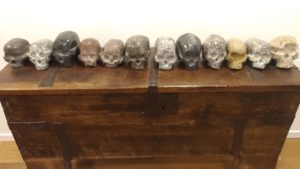
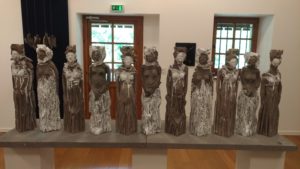
We find on the floor of this small museum, in the hawker’s room upstairs, hosting a temporary exhibition, until September 30th, replacing another about the liturgical textile last year. The artist of this year, the artist Denis Monfleur, works in Fontenay sous Bois. He highlights for example, the sculptures of nuns enamelled Chambois enamelled as well as skulls in granite and basalt and some enamels, in his many artworks.
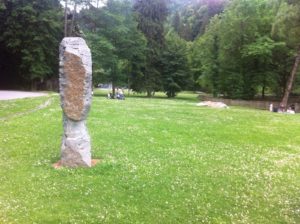
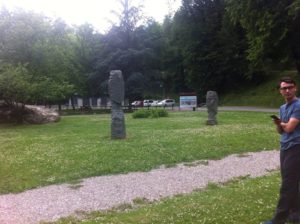
Biggers artwork pieces of Denis Monfleur could also be found in the park around the Saint Gervais thermal center (that will be reopen on Summer 2018 after a renovation), surrounded by a bucolic electric train.
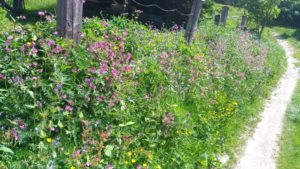 On this Baroque route, there were many oratories and pilgrimage routes as well, which occupies an important place in the life of the Savoyards of the 18th century, notably that towards Einsiedeln, in German-speaking Switzerland.
On this Baroque route, there were many oratories and pilgrimage routes as well, which occupies an important place in the life of the Savoyards of the 18th century, notably that towards Einsiedeln, in German-speaking Switzerland.
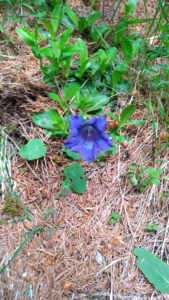
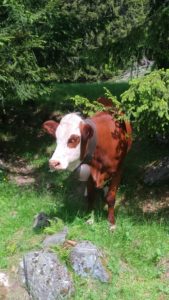
The fauna and flora are also prominent in the Mont-Blanc massif with different sides according to the altitude. Most representative stages of vegetation within the Espace Mont-Blanc are the subalpine stage, where the coniferous forest prevails, populated mainly by Spruce and Larch; the alpine level, characterized by the meadow which upwards clears up in pioneer mounds; and at the top, the nival floor, above the eternal snows.
The undergrowth of the subalpine stage is home to many species; among the most showy, the very beautiful and rare Sabot de Venus orchid, the Martagon lily, the Ancolie des Alpes.
By passing through a band where shrubs, such as Rhododendron and Bilberry abound, the subalpine stage is degraded upwards in the alpine stage. The alpine meadow is populated by many species with spectacular blooms including the two vicarious acaule Gentian (like the right photo) and Gentian Clusius, the famous Edelweiss and the rare thyrsus Campanula.
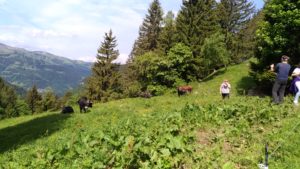
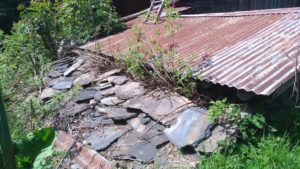
Discover also ITINERAS – the Roads of sacred art and architecture to showcase them through churches, chapels, oratories, ways of cross… the Mont Blanc path, considered one of the classic long distance trails. During your trek, you could stay overnight in mountain huts, open from mid-June to the first or second week of September. It is advisable to book your bed, especially in high season, ie from mid-July to mid-August.
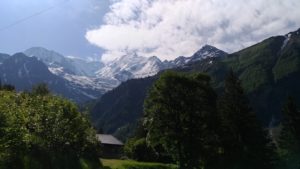
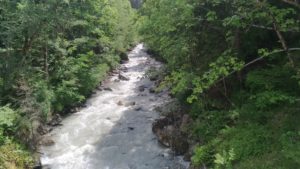
The circular road is normally cycled counterclockwise for a period of 7 to 10 days. It is also the road to an annual ultra-endurance mountain run (the Mont-Blanc Ultra-Trail), during which the winner travels the total distance in less than 24 hours. The usual starting points are Les Houches in the Chamonix valley, Les Contamines in the Montjoie valley (in France), Courmayeur on the Italian side and Champex or a point near Martigny in Switzerland.
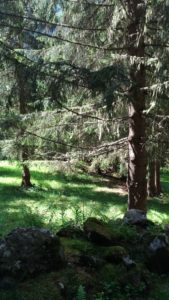 The route passes through eight valleys around the Mont-Blanc massif: Arve valley (or Chamonix valley), Montjoie valley, Glacier valley, Vény valley, Italian Val Ferret, Swiss Val Ferret, Arpette valley and the valley of Trient in Switzerland.
The route passes through eight valleys around the Mont-Blanc massif: Arve valley (or Chamonix valley), Montjoie valley, Glacier valley, Vény valley, Italian Val Ferret, Swiss Val Ferret, Arpette valley and the valley of Trient in Switzerland.
This hiking trail of the Mont Blanc or GR Mont Blanc tour, or TMB covers a distance of about 170 km with a total altitude of 10 km uphill across part of Switzerland, Italy and France. Better to be guided with some skilled High-Mountain guides! Last but not least, there are also are many water spots around Saint-Gervais to observe, like the Lake Armancette, the Gorge of Gruvaz and the Lake Jovet, a beautiful glacial lake and a fantastic place to picnic. The path is sometimes a bit steep, where there are many wild flowers and animals.
https://www.instagram.com/p/Bjl8DgnlEgy/?taken-by=francevisiting
https://www.instagram.com/p/BjqVkrdFvqU/?taken-by=francevisiting
https://www.instagram.com/p/BjvgtXHF5wa/?taken-by=francevisiting
https://www.instagram.com/p/BjvgtXHF5wa/?taken-by=francevisiting
